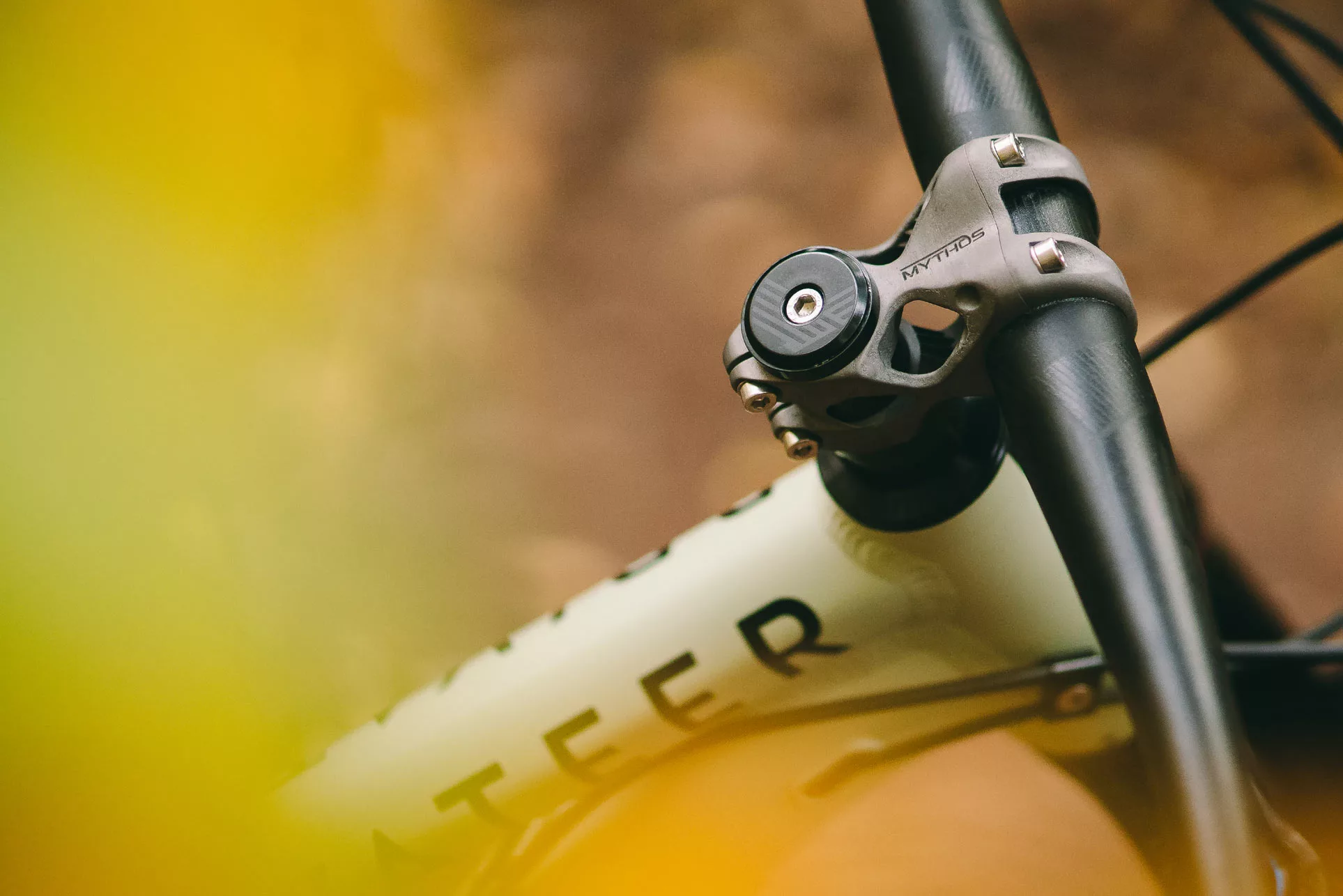Using additive manufacturing to “print” road and mountain bike stems out of 6/4 titanium powder, the Mythos stems use a uniquely open design based on the real-world stresses stems face.
Offered in two models -the road ELIX, and the mountain bike IXO- Mythos’s stems are designed in house in the UK, then printed by METRON Advanced Equipment for them. They say the stems are both torsionally stiffer and stiffer in bending compared to an equivalent alloy stem.
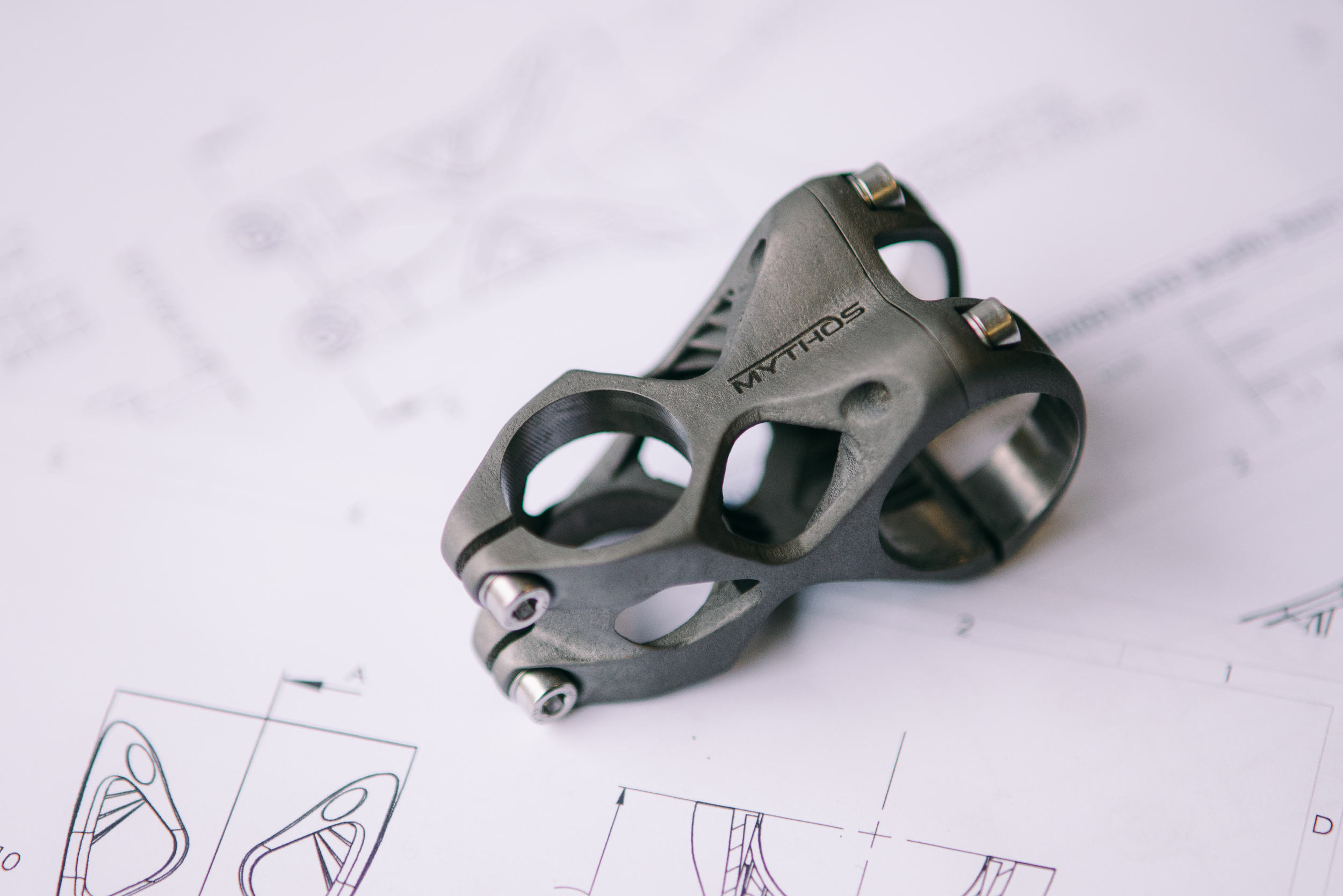
The IXO, shown above, comes in 40mm and 50mm lengths (£250 incl. VAT) with 0º rise and a 38mm stack height with a no-gap faceplate. Weight from 147g with ti hardware, they say it’s 16% stiffer torsionally and 11% stiffer in bending.
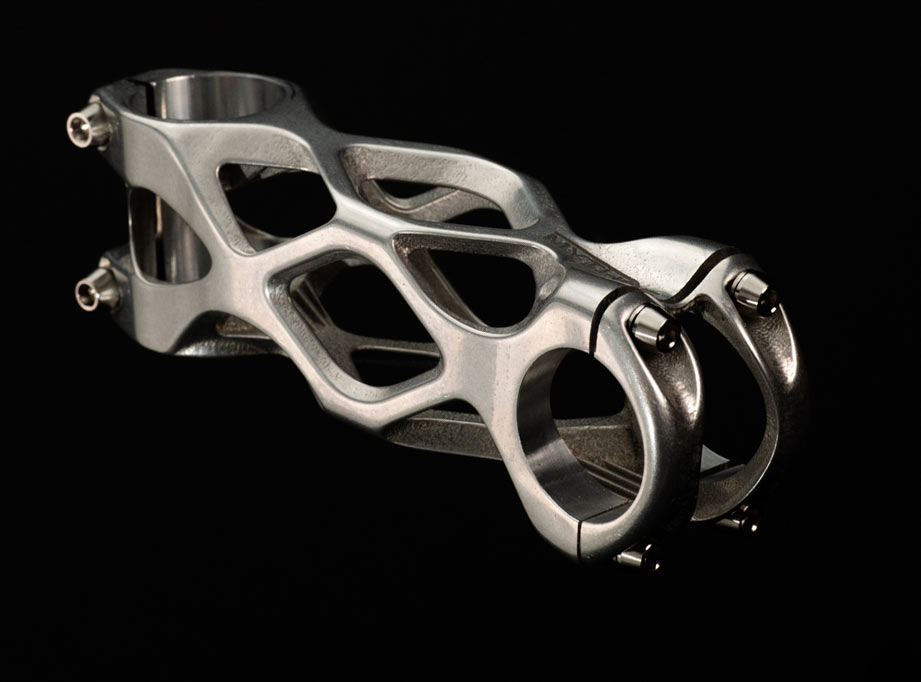
The ELIX (above, £500 incl. VAT) road bike stem is made from Scalmalloy, which is a mix of Scandium, Aluminum, and Magnesium and is a substitute for 7000-series aluminum and is stronger than titanium. It comes in 100/110/120/130mm lengths with a +/-8º rise. It comes in three finishes and weighs as little as 150g including titanium hardware. They say it’s 15% stiffer torsionally, but has the same bending stiffness as a good alloy stem.
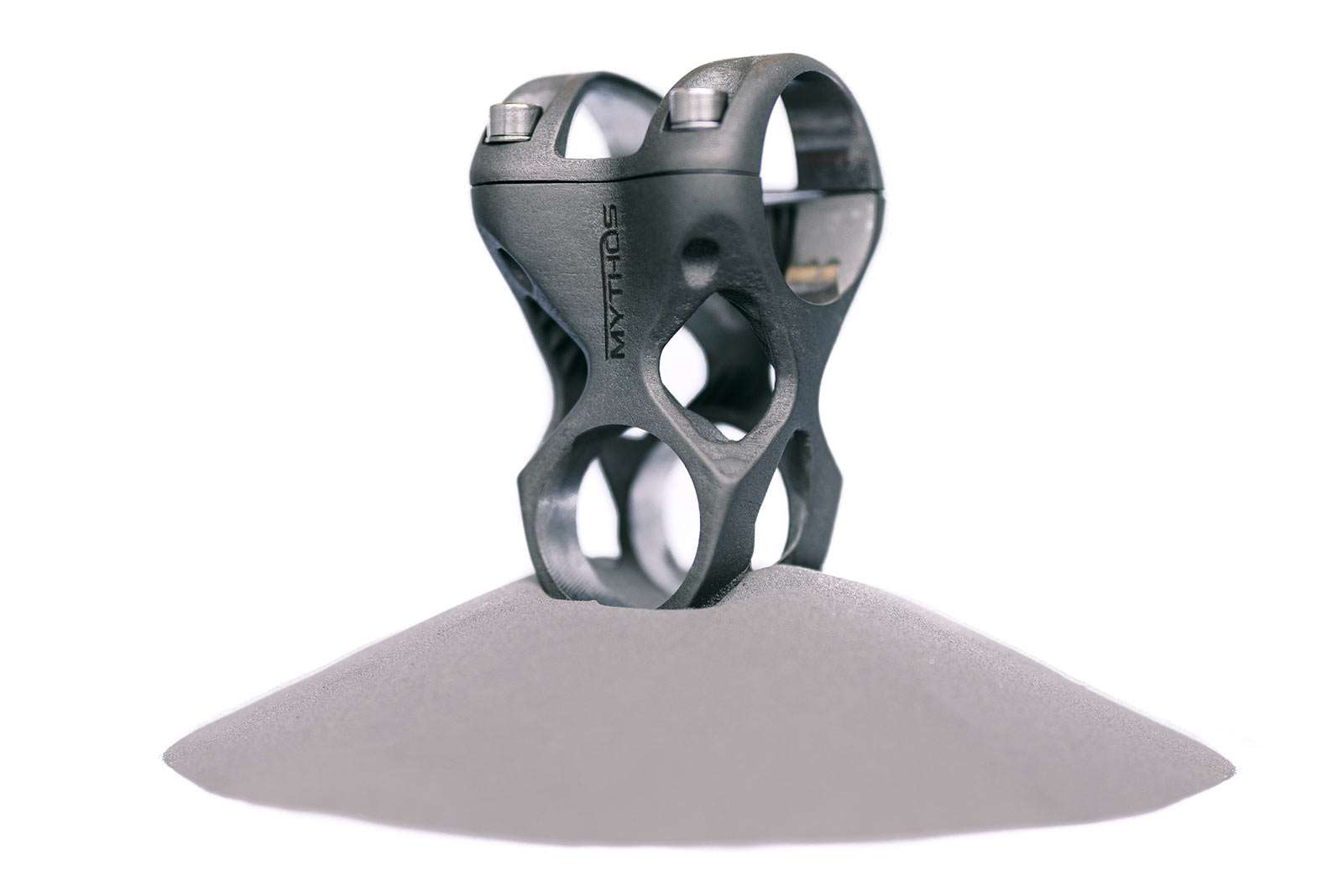
The stems use SLM Additive manufacturing, which essentially melts metal powder into a solid, layer by layer, to create a finished part.
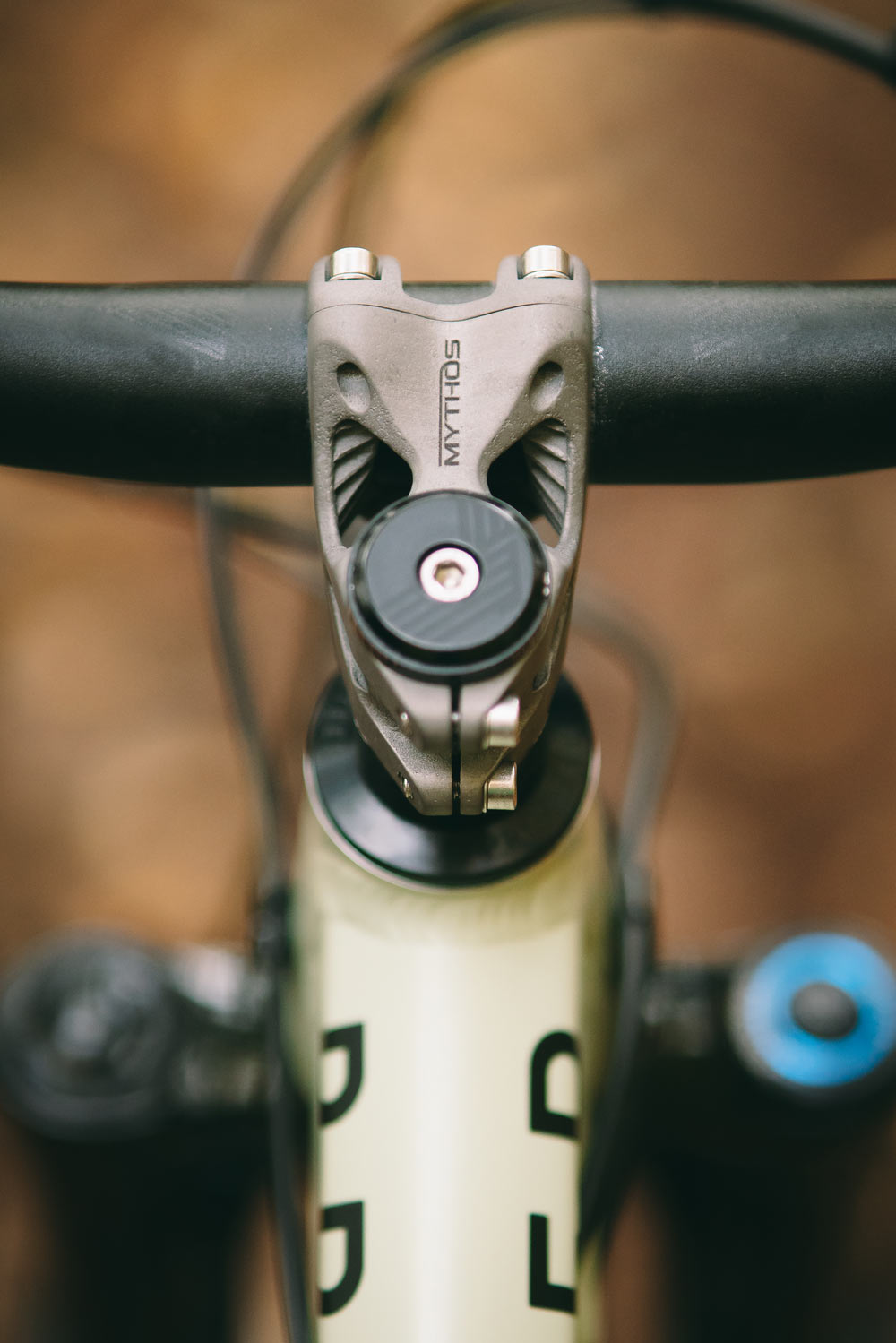
The ELIX road bike stems are available now, and pre-orders are open for the MTB stems.
